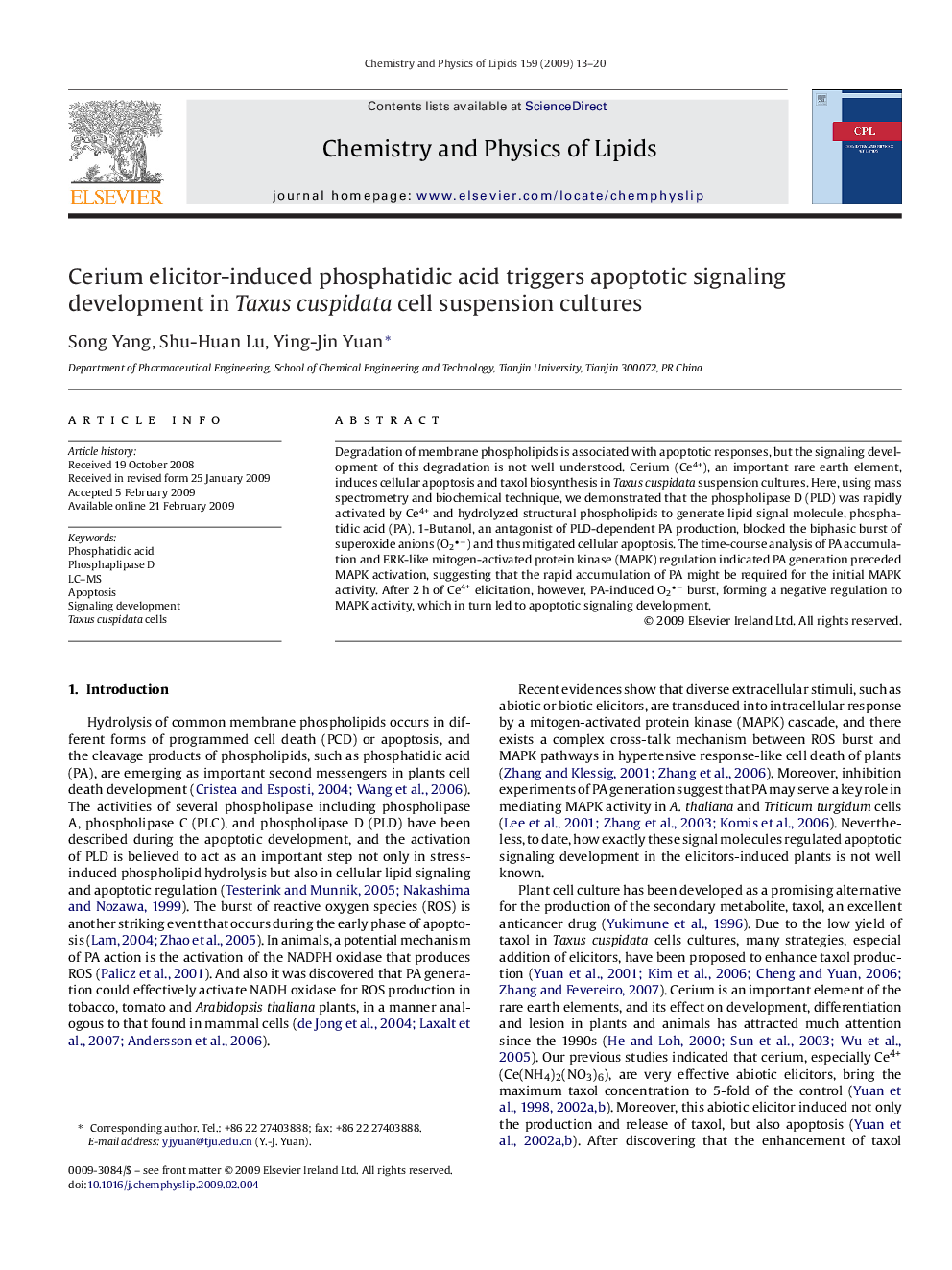| Article ID | Journal | Published Year | Pages | File Type |
|---|---|---|---|---|
| 1252413 | Chemistry and Physics of Lipids | 2009 | 8 Pages |
Degradation of membrane phospholipids is associated with apoptotic responses, but the signaling development of this degradation is not well understood. Cerium (Ce4+), an important rare earth element, induces cellular apoptosis and taxol biosynthesis in Taxus cuspidata suspension cultures. Here, using mass spectrometry and biochemical technique, we demonstrated that the phospholipase D (PLD) was rapidly activated by Ce4+ and hydrolyzed structural phospholipids to generate lipid signal molecule, phosphatidic acid (PA). 1-Butanol, an antagonist of PLD-dependent PA production, blocked the biphasic burst of superoxide anions (O2−) and thus mitigated cellular apoptosis. The time-course analysis of PA accumulation and ERK-like mitogen-activated protein kinase (MAPK) regulation indicated PA generation preceded MAPK activation, suggesting that the rapid accumulation of PA might be required for the initial MAPK activity. After 2 h of Ce4+ elicitation, however, PA-induced O2− burst, forming a negative regulation to MAPK activity, which in turn led to apoptotic signaling development.
